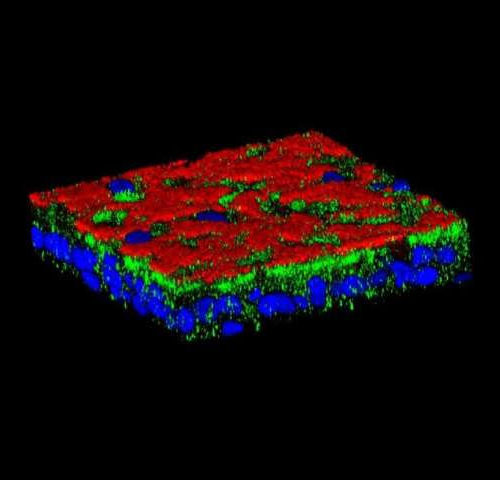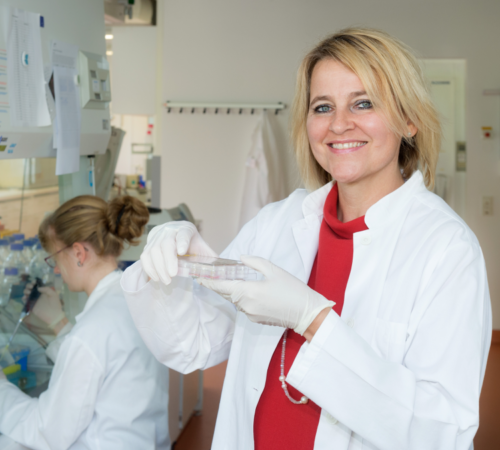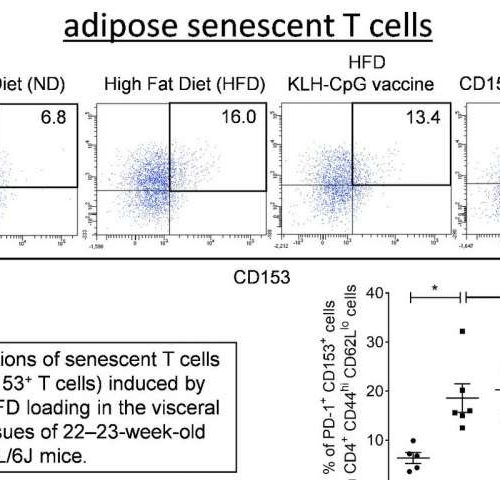UNIVERSITY OF COPENHAGEN THE FACULTY OF HEALTH AND MEDICAL SCIENCES An international research team have discovered how to activate brown fat in humans, which may lead to new treatments for type 2 diabetes and obesity. The results of the collaboration between the Centre de recherche du Centre hospitalier universitaire de Sherbrooke (CRCHUS) and the Novo...
Tag: <span>metabolism</span>
Researchers develop a portable blood ammonia detector
STANFORD UNIVERSITY A PROTOTYPE OF THE HANDHELD AMMONIA BLOOD DETECTOR AND ASSOCIATED TEST STRIPS, DEVELOPED BY RESEARCHERS AT STANFORD. view more CREDIT: THOMAS VELTMAN Seated around the dinner table, faculty affiliated with Stanford ChEM-H – one of Stanford University’s interdisciplinary institutes – spoke one-by-one, pitching ideas for collaborative research. Inspired by a recent medical conundrum,...
City of Hope: Mechanism that may lead to metabolic memory/sustained diabetes complications
New data show how early episodes of hyperglycemia can have long-term effects CITY OF HOPE CITY OF HOPE’S RAMA NATARAJAN, PH.D., THE NATIONAL BUSINESS PRODUCTS INDUSTRY PROFESSOR IN DIABETES RESEARCH, view more CREDIT: CITY OF HOPE DUARTE, Calif. — For people with diabetes, vascular complications like kidney disease and atherosclerosis, which can lead to poor...
Cystic fibrosis: Why so many respiratory complications?
by University of Geneva The protein Vav3 (in green) creates «bacterial docking stations» on the surface (in red) of respiratory cells (nuclei in blue) that facilitate airways’ infection in patients with cystic fibrosis. Credit: UNIGE, laboratoire Chanson Cystic fibrosis, one of the most common genetic diseases in Switzerland, causes severe respiratory and digestive disorders. Despite...
Study pinpoints brain cells that trigger sugar cravings and consumption
by Jennifer Brown, University of Iowa The hormone FGF21 is made in the liver and acts in the brain to suppress sugar intake and the preference for sweet taste. The cartoon illustrates the role FGF21 plays in food choices.Understanding the biological mechanisms that control sugar intake and preference for sweet taste could have important implications...
Study pinpoints brain cells that trigger sugar cravings and consumption
by Jennifer Brown, University of Iowa The hormone FGF21 is made in the liver and acts in the brain to suppress sugar intake and the preference for sweet taste. The cartoon illustrates the role FGF21 plays in food choices.Understanding the biological mechanisms that control sugar intake and preference for sweet taste could have important implications...
Ageing research: Low levels of the stress hormone cortisol contribute to ageing
Why do we age? What exactly happens in the body? And: Can something be done about it? These are questions that have occupied science since time immemorial. The pharmacists Alexandra K. Kiemer and Jessica Hoppstädter from the Saarland University have not found a philosophical stone. But: they have uncovered processes in the immune system that...
The gut shields the liver from fructose-induced damage
by Perelman School of Medicine at the University of Pennsylvania After one consumes food or a beverage containing fructose, the gastrointestinal system, or gut, helps to shield the liver from damage by breaking down the sugar before it reaches the liver, according to a new multi-center study led by researchers in the Perelman School of...
Age research: A low level of the stress hormone cortisol contributes to the ageing process
SAARLAND UNIVERSITY WHY DO WE AGE? WHAT EXACTLY IS HAPPENING IN OUR BODIES? AND CAN WE DO ANYTHING ABOUT IT? MANKIND HAS SOUGHT ANSWERS TO THESE QUESTIONS SINCE TIME IMMEMORIAL. WHILE THE… view more CREDIT: IRIS MAURER Why do we age? What exactly is happening in our bodies? And can we do anything about it?...
A vaccine targeting aged cells mitigates metabolic disorders in obese mice
by Osaka University were defined as PD-1+ CD153+ cells in CD4+ T cells. The proportion of senescent T cells in visceral adipose tissues (VAT) of the high fat diet (HFD) control group was significantly increased compared with that in the VAT of the normal diet (ND) control group. CD153-CpG vaccination of HFD mice resulted in...









